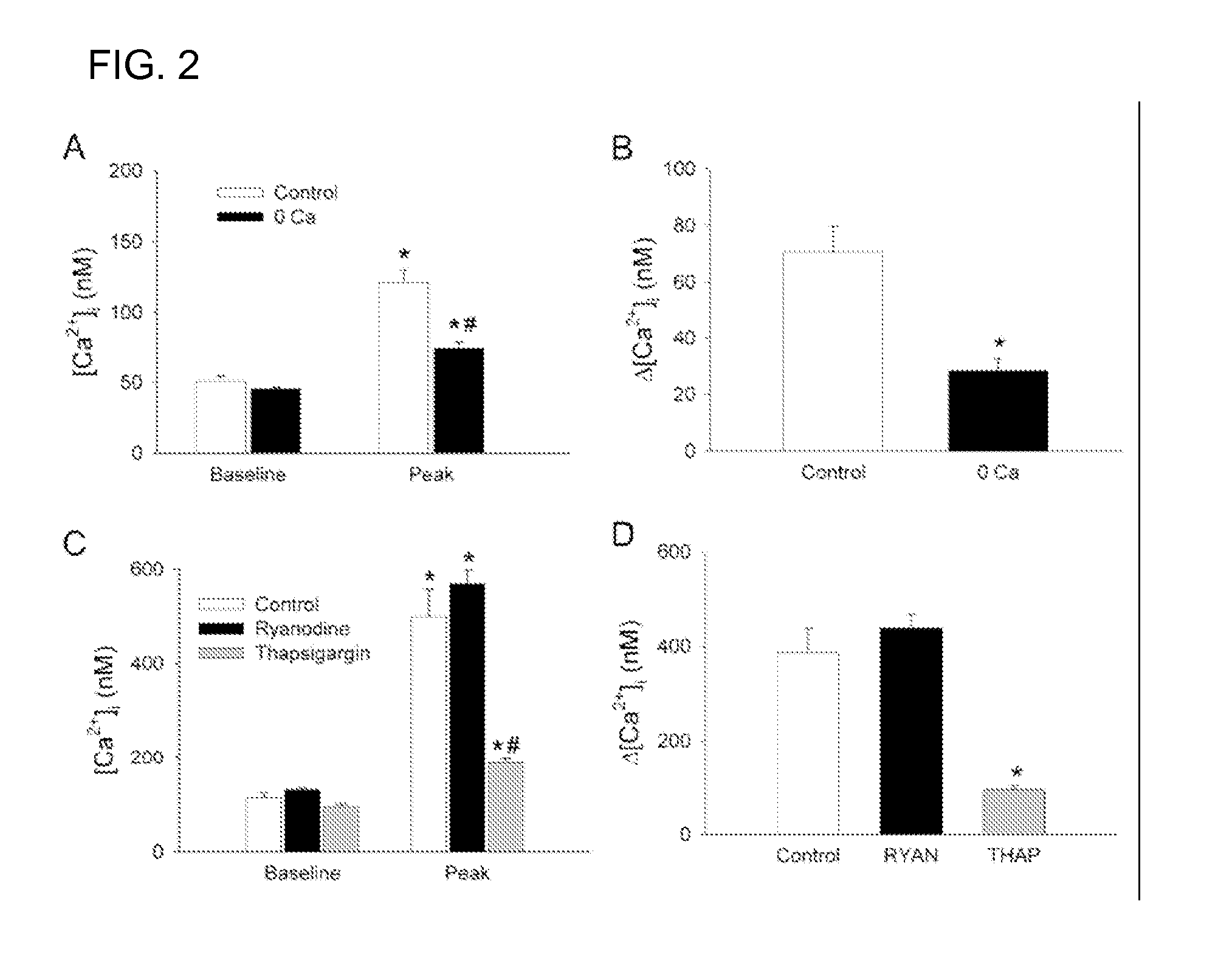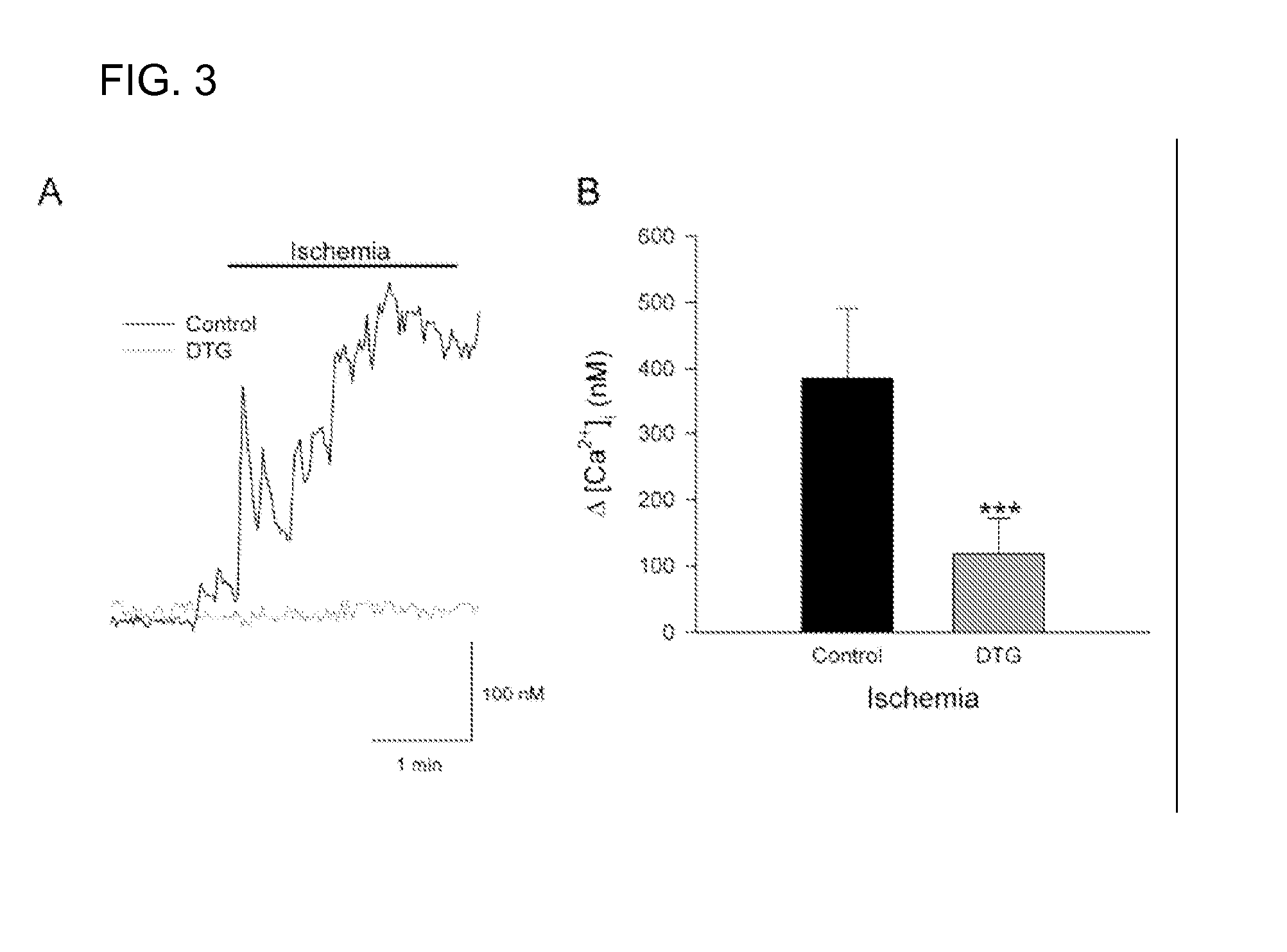Treatment with Sigma Receptor Agonists Post-Stroke
a sigma receptor and agonist technology, applied in the field of stroke treatment, can solve the problems of neuronal death, hemorrhage and reperfusion damage from oxygen free radicals, adverse effects, etc., and achieve the effects of reducing the peak amplitude, high affinity, and reducing the infarction area
- Summary
- Abstract
- Description
- Claims
- Application Information
AI Technical Summary
Benefits of technology
Problems solved by technology
Method used
Image
Examples
casellas p
[0113] Casellas P, Galiegue S, Bourrie 8, Ferrini J B, Jbilo 0 and Vidal H (2004) SR31747A: a peripheral sigma ligand with potent antitumor activities. Anticancer Drugs 15:113-118.
[0114] Choi, D. W. (1988a). Calcium-mediated neurotoxicity: relationship to specific channel types and role in ischemic damage. Trends Neurosci. 11. 465-469.
[0115] Choi, D. W. (1995). Calcium: still center-stage in hypoxic-ischemic neuronal death. Trends Neurosci. 18. 58-60.
[0116] Chu, X. P., Miesch, J., Johnson, M., Root, L., Zhu, X. M., Chen, D., Simon, R. P., and Xiong, Z. G. (2002). Proton-gated channels in PC12 cells. J. Neurophysiology. 87. 2555-2561.
[0117] Cuevas J and Berg D K (1998) Mammalian nicotinic receptors with alpha7 subunits that slowly desensitize and rapidly recover from alpha-bungarotoxin blockade. J Neurosci 18:10335-10344.
[0118] DeHaven W I and Cuevas J (2004) VPAC receptor modulation of neuroexcitability in intracardiac neurons: dependence on intracellular calcium mobilization an...
PUM
| Property | Measurement | Unit |
|---|---|---|
| pH | aaaaa | aaaaa |
| pH | aaaaa | aaaaa |
| diameter | aaaaa | aaaaa |
Abstract
Description
Claims
Application Information
 Login to View More
Login to View More - R&D
- Intellectual Property
- Life Sciences
- Materials
- Tech Scout
- Unparalleled Data Quality
- Higher Quality Content
- 60% Fewer Hallucinations
Browse by: Latest US Patents, China's latest patents, Technical Efficacy Thesaurus, Application Domain, Technology Topic, Popular Technical Reports.
© 2025 PatSnap. All rights reserved.Legal|Privacy policy|Modern Slavery Act Transparency Statement|Sitemap|About US| Contact US: help@patsnap.com



